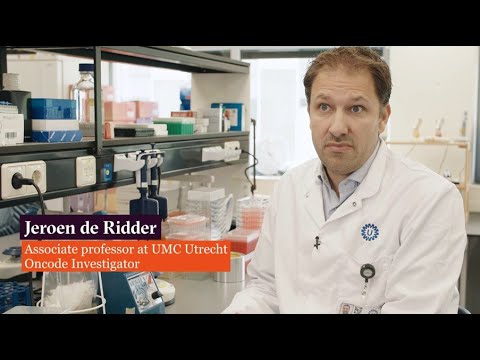The process of identifying the type of brain tumor a patient has normally takes a week. Thanks to new AI technology, it’s possible to analyze this during surgery, within 1.5 hours. The new technology allows neurosurgeons to adjust their surgical strategies on the spot. Oncode researchers from UMC Utrecht and researchers, pathologists and neurosurgeons from the Princess Máxima Center for pediatric oncology and Amsterdam UMC have published about this study in Nature.
In the Netherlands, 1,400 adults and 150 children are diagnosed with a tumor in the brain or spinal cord every year. Surgery is often the first step taken in treatment. Currently, during surgery, neurosurgeons do not precisely know what type of brain tumor and what degree of aggressiveness they are dealing with. The exact diagnosis will usually only be available one week after surgery, after the tumor tissue has been visually and molecularly analyzed by a pathologist.
Deep-learning algorithm
Oncode Researchers from UMC Utrecht have developed a new ‘deep-learning algorithm’, a form of artificial intelligence, which significantly speeds up the diagnosis.
Oncode Investigator Jeroen de Ridder, research group leader within UMC Utrecht and Oncode Institute, says: “Recently, Nanopore sequencing became available: a technology that helps to read DNA in real time. For this, we developed an algorithm that is equipped to learn from millions of simulated realistic ‘DNA snapshots’. With this algorithm, we can identify the tumor type within 20 to 40 minutes. And that is fast enough to directly adjust the surgical strategy, if necessary.”
Tested and trained with the biobank
Bastiaan Tops is in charge of the Pediatric Oncology Laboratory at the Princess Máxima Center. He brought together the new technology and the needs from the operating room. This was made possible by funding from the KiKa foundation and, more specifically, to the extensive biobank that the Máxima Center has maintained for years. Among other things, this biobank stores tissue from children with brain tumors. The algorithm was trained and tested using the biobank.
“The fact that we are able to determine the type of brain tumor during surgery shows how technology can speed up diagnostics. And how we can use an existing biobank to develop new technology”, Tops says.
Applied during surgery
Consequently, the whole procedure was also carried out several times during actual brain surgeries: from taking the tissue in the operating room to determining the tumor type in the lab. In Utrecht, this procedure was performed on children and in Amsterdam on adults. The total length of the procedure turned out to be 60 to 90 minutes.
The Princess Máxima Center has decided that the results of the technique are sufficiently reliable and is already using it with children for whom the outcome may determine the surgical strategy. Surgeons at the Amsterdam UMC will also use the technique in daily practice, to help them speed up diagnosis.
Eelco Hoving, pediatric neurosurgeon and clinical director of neuro-oncology at the Máxima Center, is excited about the possibilities of DNA analysis during surgery: “During surgery, a small remnant of tumor tissue is sometimes deliberately left behind to prevent neurological damage. But if it will later turn out, for example, that the tumor is very aggressive, a second operation may still be necessary to remove that last remnant. This will create new risks and stress for patients and their families. This can now be avoided because we will already know during the first operation what type of tumor we are dealing with."
Oncode Investigator Jeroen de Ridder adds: “It is wonderful that we have been able to actually make the step into clinical practice by combining all areas of expertise, from basic researchers to pathologists and surgeons. By doing so, we can help surgeons to optimize the outcome of brain tumor surgery.”
Chris De Jonghe, Valorization Director at Oncode Institute, concludes: “This is truly a great example of how Oncode Institute can accelerate valorization. The timeline from bench to bedside has been very short and this is thanks to interdisciplinary collaboration and the use of both Oncode’s base fund and technology development fund. In addition, we’ve taken the necessary steps to ensure the technology will be further developed according to regulatory requirements. This will help to make it broadly accessible to patients who can benefit from it.”
